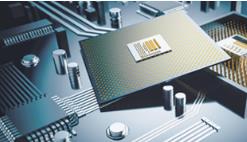Basic rules of wiring
The quality of PCB design has a great influence on its anti-interference ability. Therefore, in PCB design, the basic principles of the design must be observed, and the requirements of anti-interference design should be met, so that the circuit can obtain the best performance.
When double-sided wiring, the wires on both sides should be perpendicular to each other, obliquely crossed or bent to avoid parallel to each other to reduce parasitic coupling.
The PCB should try to use 45° fold lines instead of 90° fold lines to reduce the external emission and coupling of high-frequency signals.
The printed wires used as the input and output of the circuit should be avoided as much as possible to avoid backflow. It is best to add a grounding wire between these wires.
When the board surface wiring density difference is large, it should be filled with mesh copper foil, and the grid size is 02mm (8mil)
Do not put through holes on the SMD pads, so as to avoid the loss of paste and cause false soldering of components.
Important signal wires are not allowed to pass between the sockets.

Avoid step-through holes under the components such as horizontal resistors, inductors (plug-ins), electrolytic capacitors, etc., so as to avoid short-circuit between the holes and the component shells after peak soldering.
When wiring manually, lay out the power cord first, then the ground wire, and the power cord should be on the same level as possible.
The signal line must not have looped wiring. If a loop has to occur, try to make the loop as small as possible.
When the wiring passes between the two pads and does not communicate with them, a large and equal distance should be maintained with them.
The distance between the wiring and the wires should also be uniform, equal and kept to the maximum.
The excess of the connection between the wire and the pad should be smooth to avoid small sharp corners.
When the center distance between the pads is less than the outer diameter of a pad, the width of the connecting wire between the pads can be the same as the diameter of the pad; when the center distance between the pads is greater than the outer diameter of the pad, it should be Reduce the width of the wire; when there are more than 3 pads on a wire, the distance between them should be greater than the width of the two diameters.
The common ground wire of the printed wire should be placed on the edge of the PCB as much as possible. Keep as much copper foil as the ground wire on the PCB, so that the shielding effect obtained is better than a long ground wire, the transmission line characteristics and shielding effect will also be improved, and it also plays a role in reducing the distributed capacitance. The common ground wire of the printed wire should preferably form a loop or mesh. This is because when there are many integrated circuits on the same PCB, the ground potential difference is generated due to the limitation of the pattern, which causes the reduction of noise tolerance. When made into a loop, the ground potential difference is reduced.
In order to suppress noise, the patterns of grounding and power supply should be as parallel as possible to the direction of data flow.
Multi-layer PCB can adopt several layers as shielding layers. Power layer and grounding layer can be regarded as shielding layers. It should be noted that the general grounding layer and power layer are designed as inner or outer layers.
Separate the digital area from the analog area as much as possible, and separate the digital ground from the analog ground, and finally the ground and power plane.